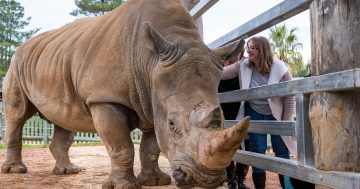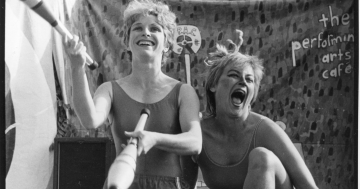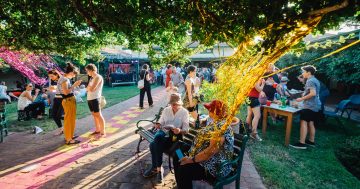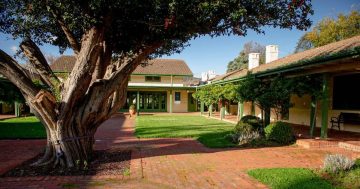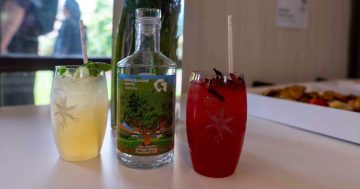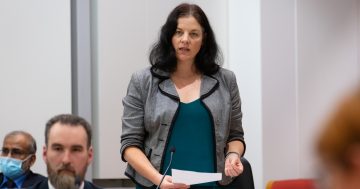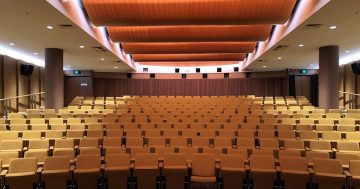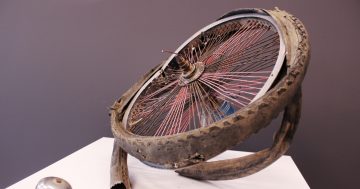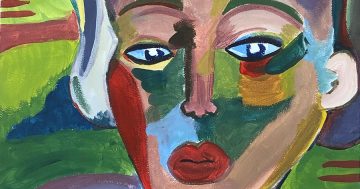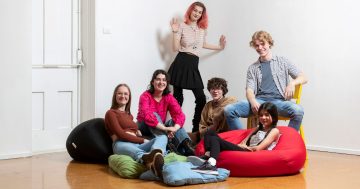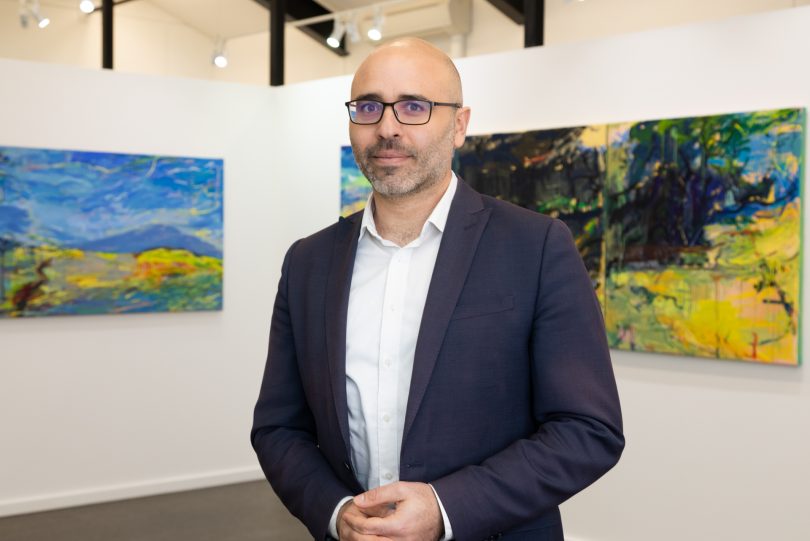
Ainslie and Gorman Arts Centres director Joseph Falsone. Photo: Michelle Kroll.
Why isn’t Canberra a national or, indeed, an international arts capital?
Joseph Falsone, who heads the Ainslie and Gorman Arts Centres, thinks we have the potential to reach for the stars – if only we could get our arts act together.
“Our vision is for Canberra as a well-connected node in a network of international cities,” he says.
“We have the artists, the audiences and the international connections, but apart from a very few organisations, we are not on the map nationally or internationally.
“Why are we not a place that imports artists, on a list of the top three art destinations if you were visiting from overseas? Fifteen years ago, nobody would have thought that way about Hobart or Newcastle, but those perceptions have been shifted.”
Joseph argues that Canberra’s arts scene often sits in the shadow of the national institutions, to the detriment of the thriving local arts community.
But how do you mobilise the money to turn the city into an arts destination?
With a really good arts policy that’s fit for its 21st century purpose, he says. And much has changed in that regard: Ainslie and Gorman has recently transitioned its structure to Arts Capital, an independent not-for-profit organisation, currently seeking new board members.
That change reflects the importance of financial sustainability and business smarts for arts organisations. Ainslie and Gorman has risen to the challenge in recent years. It’s grown its earned income from $600,000 per annum to $1.6 million and 200,000 people now come through the doors each year. Staff have increased from just two to 15, with an additional 15 casuals.
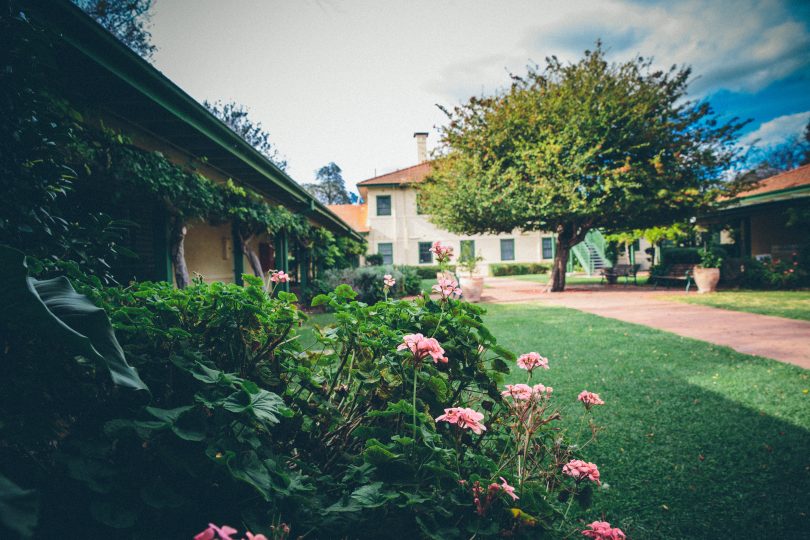
Ainslie and Gorman Arts Centres house multiple local arts oganisations. Photo: Supplied.
Dozens of artists and companies work in the twin centres located in two old heritage buildings, which buzz with choir rehearsals, theatrical performances and gallery openings, although Joseph suspects few people know just how much goes on behind the heritage facades, and COVID-19 has been a huge challenge.
He and Mark Van Veen, the Ainslie and Gorman chair, both say the centres have well and truly learned how to stand on their own feet, but that doesn’t mean that the ACT Government should step back from funding the arts equitably across the community as a whole.
“There’s a basic assumption that a civilised society will support the arts,” Joseph says.
“Ainslie and Gorman opened in 1981, at the end of a period where government put money in and the centres were sustained largely by volunteers working collaboratively. In the 2020s, the expectation is that they will be more like businesses.
“The ACT Government wants to see that, but doesn’t seem to know how to enable or engage the relationship beyond that point. We want a discussion to emerge where policy settings support, enable and reward financial sustainability rather than saying you’ve made the money, now you’re on your own.”
He says Canberra’s arts funding has been stagnant and unevenly distributed for around a decade, and that reforming the ACT arts funding model must be an urgent priority.
Defining the role of government in the arts is central to that process: are they merely landlords or benevolent patrons? Are they operators? Or is the relationship with arts centres a service contract? And where will facilities like the Kingston Arts Precinct fit in?
Joseph says none of those matters are clear, and that as a consequence, existing organisations have stagnated, a generation of new arts organisations have not taken flight and talented arts practitioners have left the city.
“There’s a review, but it’s taking a long time to happen. We are all looking forward to a more transparent and equitable system being put in place,” he says.
Ainslie and Gorman’s leaders both say it’s vital to see all of Canberra’s arts facilities as a cohesive, organic ecosystem that thrives by working together.
Joseph’s vision for Kingston, for example, is a kind of AIS for the visual arts sector with the right spaces for the right people. Instead, he says there is a piecemeal approach to one of the biggest arts projects in Canberra’s history.
“If an arts-led recovery is going to be more than an empty slogan, Canberra should hold our cultural sector to a very high standard, not see ourselves at a town council level.
“We have to challenge ourselves right through from the community participation level to excellence at all our arts facilities.
“These are no longer under-qualified, unprofessional community set-ups. These are serious businesses that match any private sector operation. – we are building an audience for professional artists ion this community, so let’s give ourselves a bigger, bolder vision and hold ourselves to account.”
